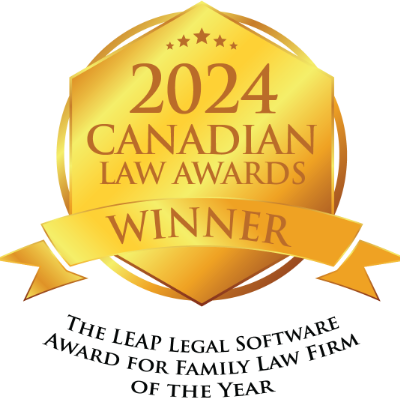
Undue Hardship Child Support Lawyers are often asked: What can I do if I can’t pay child support under the federal Child support Guidelines? Child support is a priority to ensure children of separated parents can achieve a standard of living that lets them grow up to productive adults. Senior Calgary family lawyer Peter Graburn explains the rules for Undue hardship applications in child support cases.
“Undue Hardship” and Child Support – A High Test Tel: 604 602 9000
‘It is significant, in my view, that the Guidelines are considered a floor, not a ceiling. The decided cases on the point make clear that the threshold for finding undue hardship is high.’
As we have repeatedly stressed in these articles, child support is the right of the child – both parents have a duty to financially support their dependent children, as they are able. Some people claim: “I can’t afford to pay child support”, without giving any reason. But what if a payor parent really can’t afford to pay the child support set out in the applicable Child Support Guidelines? What if, because of their unique living situation or other circumstances, paying that child support would cause an actual financial hardship to the paying parent? This is “undue hardship” in child support.
Child Support Guidelines
As we previously discussed (see: “5 Reasons to Reduce Child Support” – ), Section 3 of the Federal (and BC and Alberta) Child Support Guidelines sets out the presumptive rule that the amount of child support payable by a paying parent is determined by that parent’s (Line 150) income and the number of dependent children. However, Section 10 of the Guidelines provides that the Court can set a different amount of child support if paying the amount under Section 3 would cause the paying parent (or child) to suffer undue hardship. Section 10(2) goes on to give some circumstances that may cause the paying parent to claim undue hardship, including having:
- an unusually high level of family debt from prior to separation;
- unusually high expenses in exercising parenting time with the child(ren);
- a legal duty to financially support another person;
- a legal duty to support another child, or;
- a legal duty to support a person with an illness or disability.
Undue Hardship Child Support Lawyers in British Columbia Tel: 604 602 9000

Fraser MacLean and Lorne MacLean KC of our Vancouver office note Undue Hardship arguments are a two step process. The court must first determine that undue hardship exists under s. 10(1), having regard to the criteria set out in s. 10(2). The second stage requires a comparison of both parents’ household standards of living under s. 10(3) and (4). The onus is on the payor claiming hardship to show that if they pay or receive the full amount of child support as set out in the Guidelines, their standard of living would be lower than the other spouse’s household standard of living. For more details on why the Federal Government created the hardship rule click here.
In Kelly v. Kelly, 2011 BCCA 17 our BC the Court Of Appeal decided :
[33] A claim for undue hardship under s. 10 of the Guidelines encompasses a two-step analysis. First, the parent applying for relief must demonstrate the undue hardship that will be caused by paying Guidelines support. Section 10(2) sets out a non-exhaustive list of factors that may be considered at this stage, including “an unusually high level of debts” incurred prior to the separation or “to earn a living”, and “unusually high expenses in … exercising access”. This first step has a high threshold. The hardship that must be established is described in the authorities as severe, extreme, improper, unreasonable, or unjustified: Van Gool v. Van Gool (1998), 1998 CanLII 5650 (BC CA), 59 B.C.L.R. (3d) 395, 44 R.F.L. (4th) 314 at paras. 48-51.
[34] If, and only if, this first requirement is met, the second step engages a comparison of the standard of living in each parent’s household under s. 10(3) of the Guidelines, to ensure the payor of child support will not have a higher standard of living than the recipient if a reduction in Guidelines support is made.
[35] If the applicant establishes these two requirements, the court has a discretion to order child support in an amount other than that required by the Guidelines. This is a narrow discretion, however, and should be exercised cautiously to avoid thwarting the Guidelines’objectives of predictability and consistency: Julien D. Payne and Marilyn A. Payne, Child Support Guidelines in Canada (Irwin Law: Toronto, 2009) at 302.
Undue Hardship Child Support Lawyers in Calgary Tel: 403 444 5503

Peter Graburn of our Calgary office explains that fortunately, Alberta (and Supreme Court of Canada) cases have set out a test and relevant considerations for varying from the presumptive rule of child support due to undue hardship. In the 2000 case of Hanmore v. Hanmore (2000 ABCA 57), the Alberta Court of Appeal made it clear that the onus is on the paying parent to show that paying the presumptive amount of child support would cause them undue hardship, stating (at para. 17):
“It is evident from these authorities that the burden of establishing a claim of undue hardship is a heavy one. We agree with the comment of Wright J. that the objectives of the Guidelines will be defeated if Courts deviate from the established guidelines without compelling reasons. The hardship must be more than awkward or inconvenient. It must be exceptional, excessive, or disproportionate in the circumstances…”
The Court of Appeal then went on to set out a 2 (or 3)-step test for proving undue hardship, being that the claimant (paying parent) must show:
- Specific Evidence of Undue Hardship – the paying parent cannot just make general claims of undue hardship (ie. “I can’t afford it”), but must provide clear evidence of specific circumstances [some as set out in Section 10(2) of the Guidelines, above] of undue hardship;
- Lower Standard of Living – even if the paying parent can show specific circumstances of hardship, they must also show that they would have a lower standard of living than the receiving parent if the presumptive amount of child support was not reduced (a further 6-stage test!). Even then (3rd stage), the Court still has the discretion to deny the reduction from the presumptive amount of child support.
Almost 25 years later, Hanmore v. Hanmore remains the benchmark case for determining undue hardship in child support in Alberta. But more recent cases have also commented on this issue. In the 2020 case of Michel v. Graydon (2020 SCC 24), the Supreme Court of Canada, in looking at the factors (delay, blameworthy conduct, circumstances of the child, etc.) to be addressed in determining retroactive child support (for more on this topic, see: “Calgary Vancouver Retroactive Child Support Lawyers” – https://macleanfamilylaw.ca/2023/06/17/calgary-vancouver-retroactive-child-support-lawyers/ ), stated in regard to undue hardship (at para.’s 124 – 126):
“This factor takes into account the ease with which the payor might be able to pay the award. If the award would cause the payor undue hardship, and if the other factors do not militate against it, this factor may weigh against an award or affect its temporal scope to achieve a fair result… While the focus is on hardship to the payor, that hardship can only be assessed after taking into account the hardship which would be caused to the child and the recipient parent from not ordering the payment of sums owing but unpaid… Thus, the hardship caused to the child and the recipient parent from non-payment is also a crucial part of the equation. “
In Alberta, in the 2021 case of Henderson v. Micetich (2021 ABCA 103), the Alberta Court of Appeal echoed the Supreme Court of Canada’s comments in Michel about the reality of undue hardship (particularly on the child and recipient parent), stating (at para. 70):
“The claim of hardship must be tangible and supported by evidence, and the hardship must be undue. There is often financial difficulty when an immediate lump sum cash payment is awarded. However, without more, it is neither undue nor unfair. An assessment of hardship requires the court to have regard to unfairness created in all the circumstances, including hardship to the payor, the recipient, and the child. It is incumbent on courts to recognize that failure to provide a retroactive award will have the effect of depriving children of payments to which they are entitled. Moreover, the analysis must recognize who has benefitted from failing to fulfill the obligation in the meantime; usually that would be the payor. Hardship is a broad concept and a legitimate concern, but the focus cannot be exclusively on the payor. Rather, the analysis must be in keeping with the purpose of the legislation.”
Undue hardship and child support. Clear? No so much. What is clear is that paying parents can only claim undue hardship to reduce child support payment in exceptional circumstances, and must have specific reasons and a lower standard of living than the recipient parent to bring such a claim. Even then, the decision is discretionary. In the recent Alberta Court of King’s Bench case of Sherbo v. Sherbo (2021 ABQB 7), Justice Gates stated (at para. 33):
“It is significant, in my view, that the Guidelines, both Federal and pertaining to Alberta, are considered a floor, not a ceiling. The decided cases on the point make clear that the threshold for finding undue hardship is high. Something more is required than simply an allegation that the payor cannot afford to pay the Guideline amount. A claimant seeking relief on the basis of undue hardship must not only establish a lower household standard of living, but also that he or she falls withing one of the enumerated circumstances (or an analogous circumstance) set out in subsection 2 of the Guidelines.”
Delay makes things worse for everyone. Find out why your rights and obligations are today. Get started now.








